Last Updated on 5 months by admin
You might expect South Korea’s biggest museum to be quiet, scholarly, and—let’s be honest—just a little intimidating. But lately? The National Museum of Korea has been packed with young fans snapping selfies, hunting for pastel bodhisattvas, and searching for that one tiger painting they saw in “KPop Demon Hunters.” With BTS RM quietly guiding the way and Korean tradition blending seamlessly with immersive tech, this place has become the cultural landmark you never realized you needed on your itinerary. Now, join us as we dive deep into why National Museum of Korea is famous again: why visiting the place will be worth so much of your time, and how you can make the most of it.
Why Is the National Museum of Korea Famous Again?
Once seen as a destination for history lovers or school field trips, the National Museum of Korea has found itself at the center of a very modern culture wave.
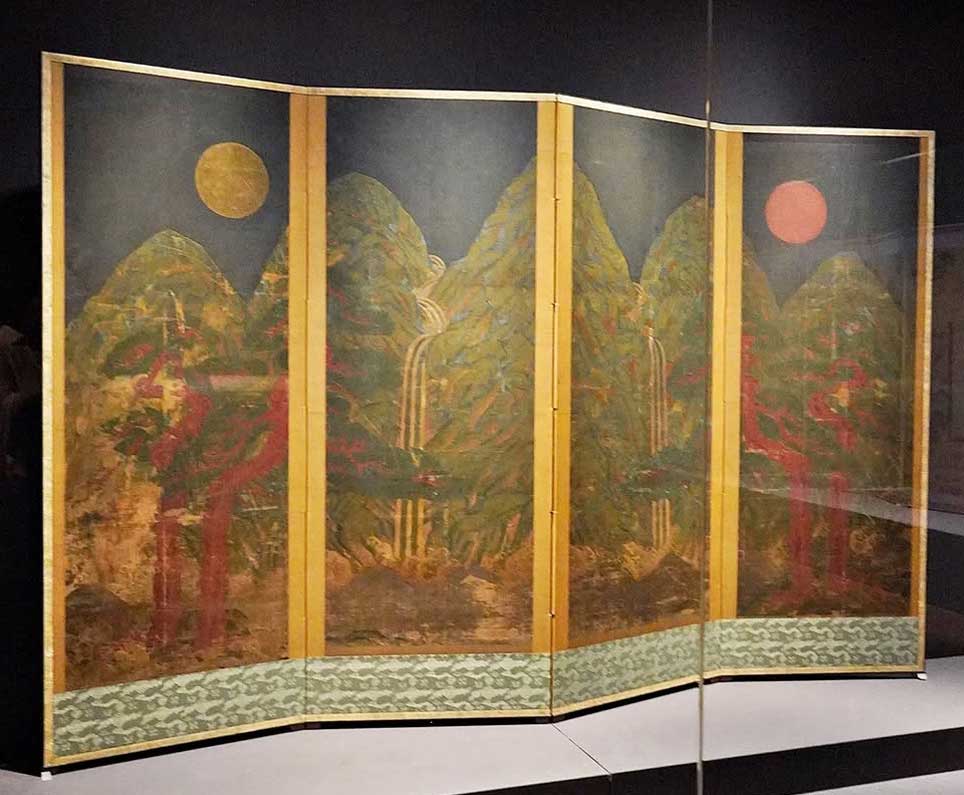
In just the first half of 2025, it welcomed a record-breaking 2.7 million visitors, with a dramatic 64% year-on-year increase in foot traffic. And international guests? Nearly 100,000 so far—more than any previous year on record.
But this rise in attention didn’t happen by accident. It was sparked by something deeply Korean, yet globally magnetic: the blending of traditional culture with pop fandom.
BTS RM: The Unexpected National Museum Influencer of South Korea
One Instagram Story from BTS leader RM—a snapshot of a 16th-century puppies painting by Yi Am—was all it took. The artwork was part of the museum’s “Art of Early Joseon” exhibition, and RM’s quiet appreciation sparked thousands to flock to see it in person. His influence turned what might’ve been a low-key showcase into a viral moment of cultural pride.
But RM isn’t new to this. Over the past few years, he’s casually brought global attention to Korean artisanship—one post, one sculpture, one museum at a time. And for young fans traveling through Seoul, the National Museum of Korea has become a must-visit pilgrimage site thanks to this great leader of BTS.
“KPop Demon Hunters” Turned Animation into a History Field Trip
And then came “KPop Demon Hunters.”
The animated Netflix hit wasn’t just a K-pop fantasy—it was an unexpected gateway into Joseon-era symbolism, showcasing iconic elements like jakhodo (tiger-magpie paintings) and gat (black sun hats worn by noblemen). Suddenly, museum merch featuring those very symbols—like tiger badges, gat keyrings, and pastel figurines—sold out almost instantly.
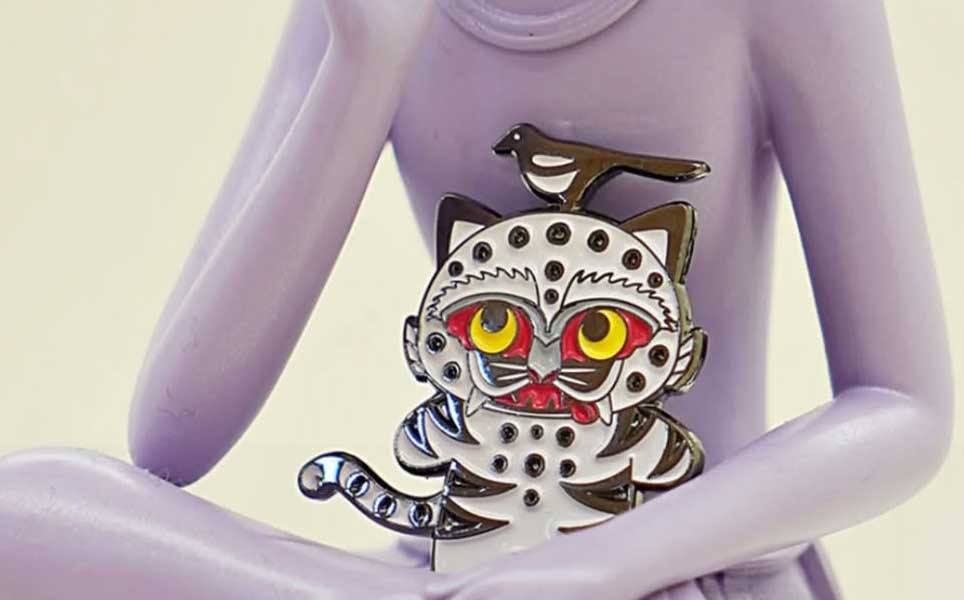
Even the museum’s digital gallery joined the momentum, premiering immersive AI-powered animations like “Roar, Tiger” and “A Day in the Life of a Cat”. These interactive experiences let you watch traditional Korean painting come alive—as if the National Treasure exhibits started dancing along with the music.
Experiences at the National Museum of Korea Worth Visiting
If you’re visiting National Museum of Korea for the first time, don’t just wander aimlessly—it’s not worth that way. These are the most impactful experiences you’ll want to carve time for:
The Room of Quiet Contemplation
Tucked inside a softly lit corridor on the second floor, this space houses two bronze Pensive Bodhisattva statues. No glass. No loud signage. Just you, a peaceful silence, and 20,000 starlike lights suspended above. The entire room smells faintly of cinnamon-infused clay, thanks to its loess walls. It’s a spiritual recharge as much as a cultural one.
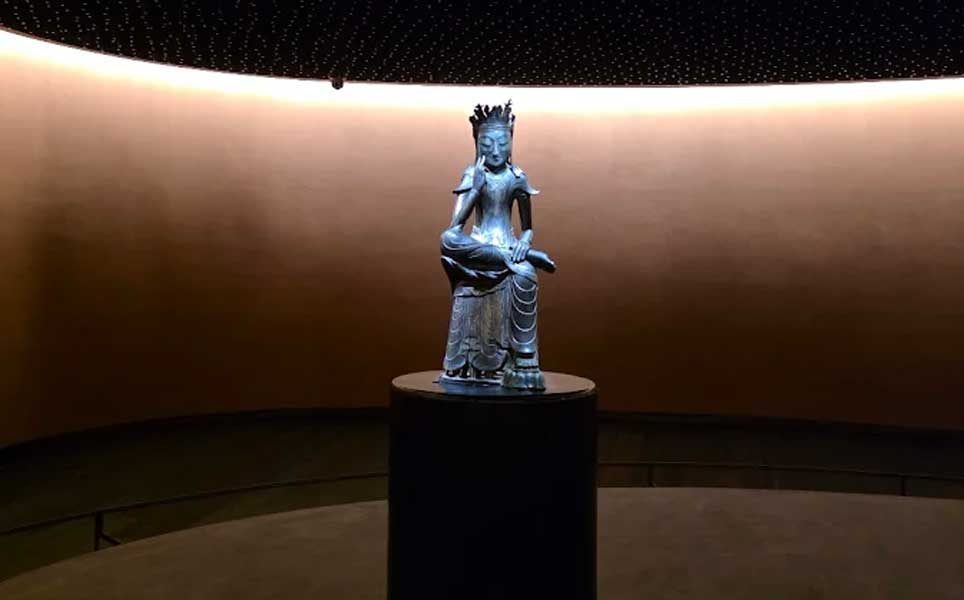
And yes—this is the very statue that inspired the pastel figurine RM owns, now a best-seller at the gift shop.
Immersive Digital Gallery 1
If you’re traveling with friends, kids, or just looking for something that doesn’t require a degree in art history, this is your spot.
Using 3D animation and AI, works like Roar, Tiger transport you into a surreal reimagining of Joseon paintings—cats roam mountains, butterflies glide past brushstrokes, and Seoul’s natural scenery merges with history. Walk in any time—no reservation needed.
Famous Souvenirs You’ll Brag About (and Actually Use) from National Museum of Korea
The gift shop at the National Museum of Korea is no longer an afterthought—it’s a full-on cultural destination in its own right. With ₩11.5 billion (~$8.4 million) in sales in just the first half of 2025, it’s clear that this isn’t just impulse-buy territory anymore—it’s smart souvenir shopping that lets you take a piece of Korea’s soul home.
What has been flying off the shelves:
Magpie and Tiger Badges
Thanks to KPop Demon Hunters, this badge has become a wearable piece of folklore. It’s not just cute—it’s symbolic, rooted in Korea’s jakhodo paintings. Pin it on your bag or camera strap as a quiet nod to the story you just stepped into.
Black Gat String Pens & Keyrings
Minimal, elegant, and charged with tradition, these accessories are popular among fans of Street Woman Fighter and historical dramas alike. The gat isn’t just a hat—it’s become a symbol of Korean identity reinterpreted through pop culture. They make great gifts, but also double as everyday reminders of your trip.
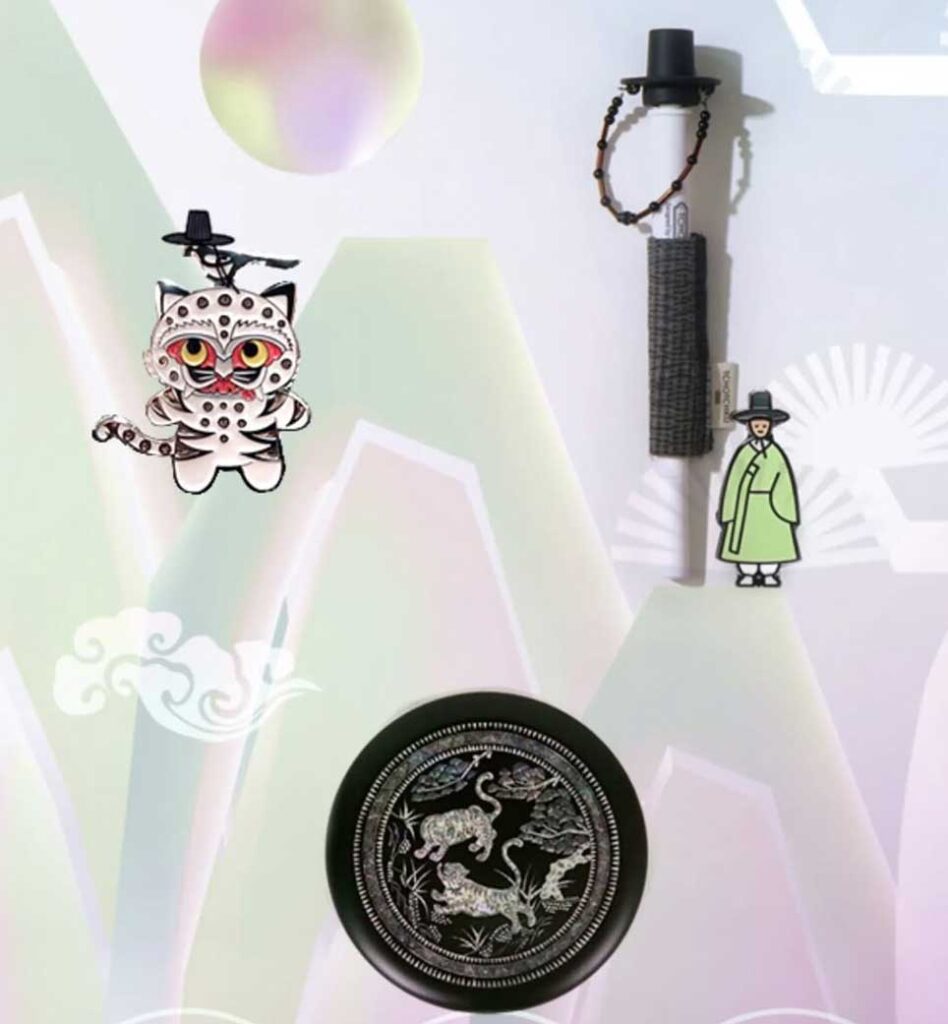
Pensive Bodhisattva Miniatures
Softly pastel and deeply meaningful, these mini-statues represent more than just museum merch. The same figure RM cherishes in his home now sits quietly on the shelves of travelers across the world. At $67.71, it’s a stunning, lasting token—something you can display, reflect on, and always associate with a moment of calm in your journey.
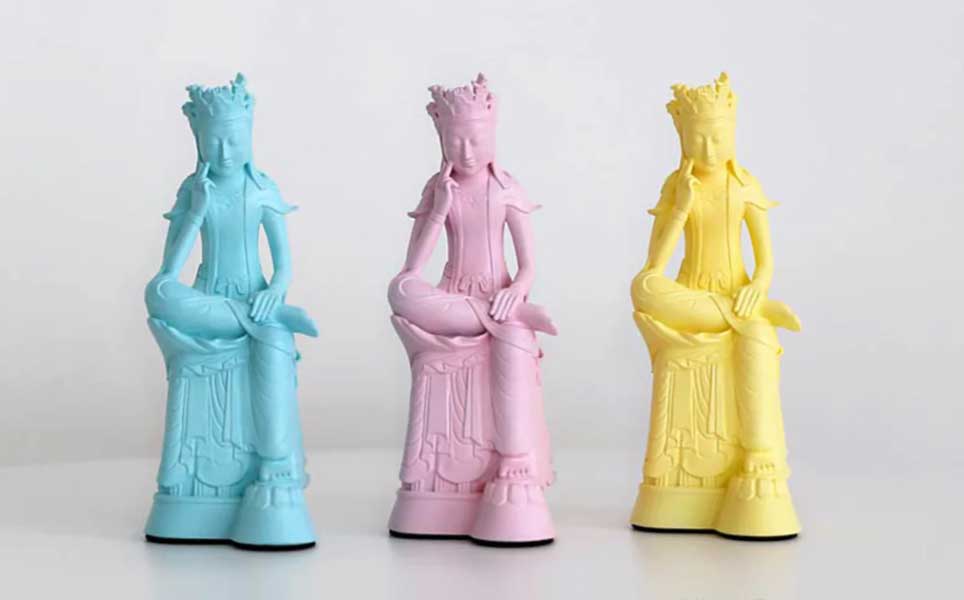
Color-Changing Soju Glasses
Fun, playful, and a conversation starter back home. Inspired by satirical 18th-century artwork, these glasses change expression with temperature. Great for your next gathering—or simply to remember Korea’s cheeky, artful sense of humor. Around ₩26,000 (~$19 USD) per set, and only available offline or in Korean online shops.

Quick Tips for Visiting the National Museum of Korea
Plan for time, not just photos.
Don’t try to rush this one. The National Museum of Korea is vast, and even a focused visit can take 2–3 hours. The permanent collection alone spans six galleries across 138,000 square meters.
If you want to see it all, consider spreading your visit across two days. But if you’re here for the Pensive Bodhisattva, make time for the Immersive Digital Gallery and a calm stroll through the Gift Shop—you’ll thank yourself later.
Check exhibit schedules in advance.
Some experiences, like the VR tours, may require reservations. The main exhibitions and digital galleries usually run continuously, but double-check on Visit Korea or the museum’s official Instagram @nationalmuseumofkorea before you go.
Weekdays are quieter.
Avoid weekends and late afternoons if you want to experience the Room of Quiet Contemplation without the crowd. Early weekday mornings are ideal for a more personal visit.
Language isn’t a barrier.
Many exhibits now include English descriptions. Staff and signage are traveler-friendly, and most guides or media materials are bilingual. Still, downloading a museum map or app beforehand can make navigating easier.
Location
The museum sits in Yongsan District, central Seoul—just a 5-minute walk from Ichon Station (Subway Line 4, Exit 2). It’s one of the most convenient major museums to access via public transportation.
Admission
Good news: most permanent exhibitions are free. You’ll only need to pay for special exhibitions or VR/interactive programs. Pricing varies, but it’s typically around ₩3,000–₩10,000 (~$2–$7 USD).
Guide: What to Prioritize at the National Museum of Korea
1. Room of Quiet Contemplation
A must for first-timers. It’s more than a viewing space—it’s a sensory experience. The loess-infused walls, the cinnamon scent, the lighting—it’s like meditation in the middle of Seoul.
2. Immersive Digital Gallery 1
This new-media space is where Joseon cats leap off scrolls and mischievous tigers roam under glowing cherry trees. No ticket needed—just walk in and enjoy the daily showings.
3. The Gift Shop
Souvenirs that are conversation starters. From K-pop-approved Bodhisattvas to cheeky soju glasses, every item ties back to the exhibits in creative, unexpected ways.
4. Instagrammable Corners
Don’t miss the exterior pond views and interior staircase for architecture shots. The second-floor window corridor facing Namsan is also a hidden gem.
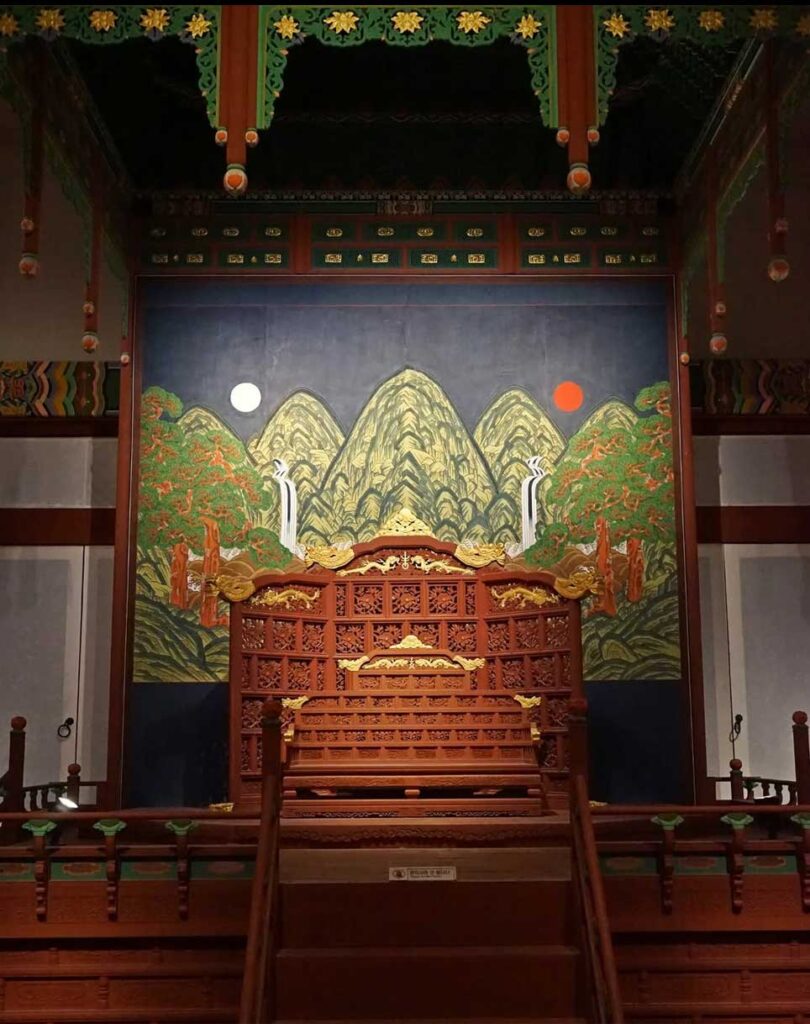
Where to Go After Visiting the Famous National Museum of Korea
Yongsan Family Park (용산가족공원)
Just a short walk away, this serene park is perfect for decompressing post-visit. Locals love it for picnics, jogs, or simple moments under pine trees. Bring a snack from the museum café and stretch out on the lawn.
I’Park Mall & Hyundai IPark Duty-Free
If you’re up for modern Korea right after ancient Korea, walk over to Yongsan Station. Shop, eat, or catch a movie—it’s one of Seoul’s most accessible retail hubs.
Leeum, Samsung Museum of Art
Feeling like another museum hit? This one’s about a 10-minute drive away in Hannam-dong and beautifully balances traditional Korean art with modern installations.
Hangang River at Ichon Hangang Park
A perfect sunset walk spot. If you’re visiting in spring or autumn, rent a bike or grab a bingsu nearby and stroll along the river trail.
Why Visiting the National Museum of Korea Is Worth Your Time
So… why is the National Museum of Korea famous now?
Because it’s not just about artifacts in glass boxes anymore. It’s about living culture, and your chance of seeing a 500-year-old tiger come alive in digital motion. But most importantly, it’s the kind of place where you can trace RM’s footsteps, discover the actual Derpy from “KPop Demon Hunters,” and actually understand why these pieces still matter.
It’s where past and present overlap—in the scent of loess walls, in the flicker of a media gallery, and in the weight of a hand-carved relic.
If you’re only adding one museum stop in Seoul, make it this one.
Share Your National Museum Glow-Up
Got your own pastel bodhisattva? Spotted the digital tiger? Bought that color-changing glass set? Tag us or comment on KoreaTravelPost—we’d love to hear your story.
Related Posts
3,147 total views, 2 views today

















